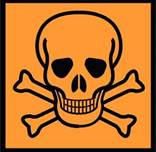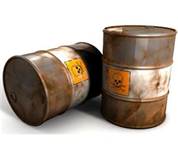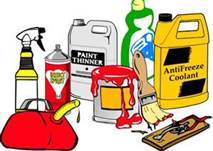Hazardous Waste
What is Hazardous Waste?
 Hazardous waste is a waste that is potentially harmful and dangerous to human health and the environment. Hazardous wastes are generated as by-products of industrial processes as well as from everyday household products, such as cleaning products and automotive fluids. A waste is considered hazardous if it exhibits any of four characteristics: toxicity, ignitability, reactivity, and corrosiveness - these are characteristic wastes. The Environmental Protection Agency (EPA) also maintains a list of substances that are considered hazardous by definition - these are considered listed wastes. There are also universal and mixed types of hazardous wastes.
Hazardous waste is a waste that is potentially harmful and dangerous to human health and the environment. Hazardous wastes are generated as by-products of industrial processes as well as from everyday household products, such as cleaning products and automotive fluids. A waste is considered hazardous if it exhibits any of four characteristics: toxicity, ignitability, reactivity, and corrosiveness - these are characteristic wastes. The Environmental Protection Agency (EPA) also maintains a list of substances that are considered hazardous by definition - these are considered listed wastes. There are also universal and mixed types of hazardous wastes.
How is hazardous waste managed?
Because hazardous waste presents threats to humans, wildlife, and the environment, it must be handled in a special way. The EPA has developed regulations which manage hazardous waste from 'cradle-to-grave' or from production to disposal.
Industry/Businesses

Most hazardous waste is generated by various industries and businesses, which must adhere to federal EPA regulations regarding the generation, transportation, storage, and disposal of hazardous waste.
Generators
Click here to search for hazardous waste generators in our area: http://www.epa.gov/enviro/facts/rcrainfo/search.html
Consumers

Hazardous waste that is generated from households is called household hazardous waste (HHW). These wastes include automotive products, paints and solvents, cleaners, pesticides and herbicides, refrigerant-containing appliances, rechargeable and automotive batteries, aerosols, and electronics.
Household hazardous waste requires special disposal and cannot be thrown away in normal household trash. A large portion can be broken down, recycled, and reused, and some is destroyed and disposed of in a special landfill.
More Information
To learn more about the kinds of hazardous substances in tribal communities, visit: http://www4.nau.edu/itep/waste/HazSubMap/
